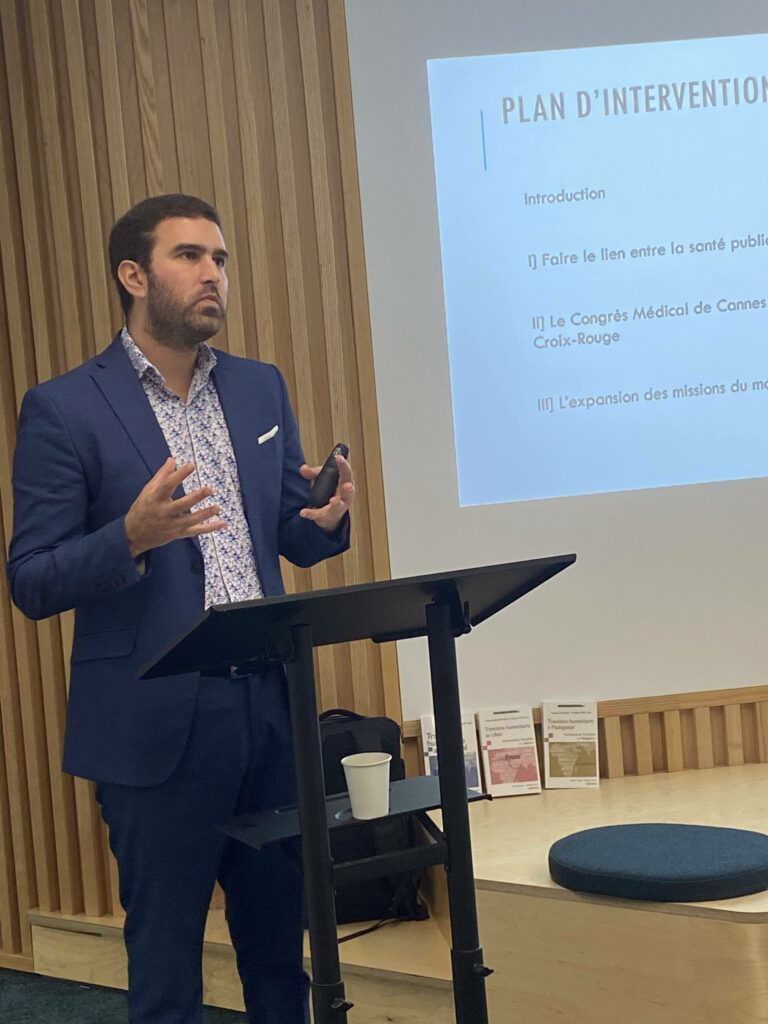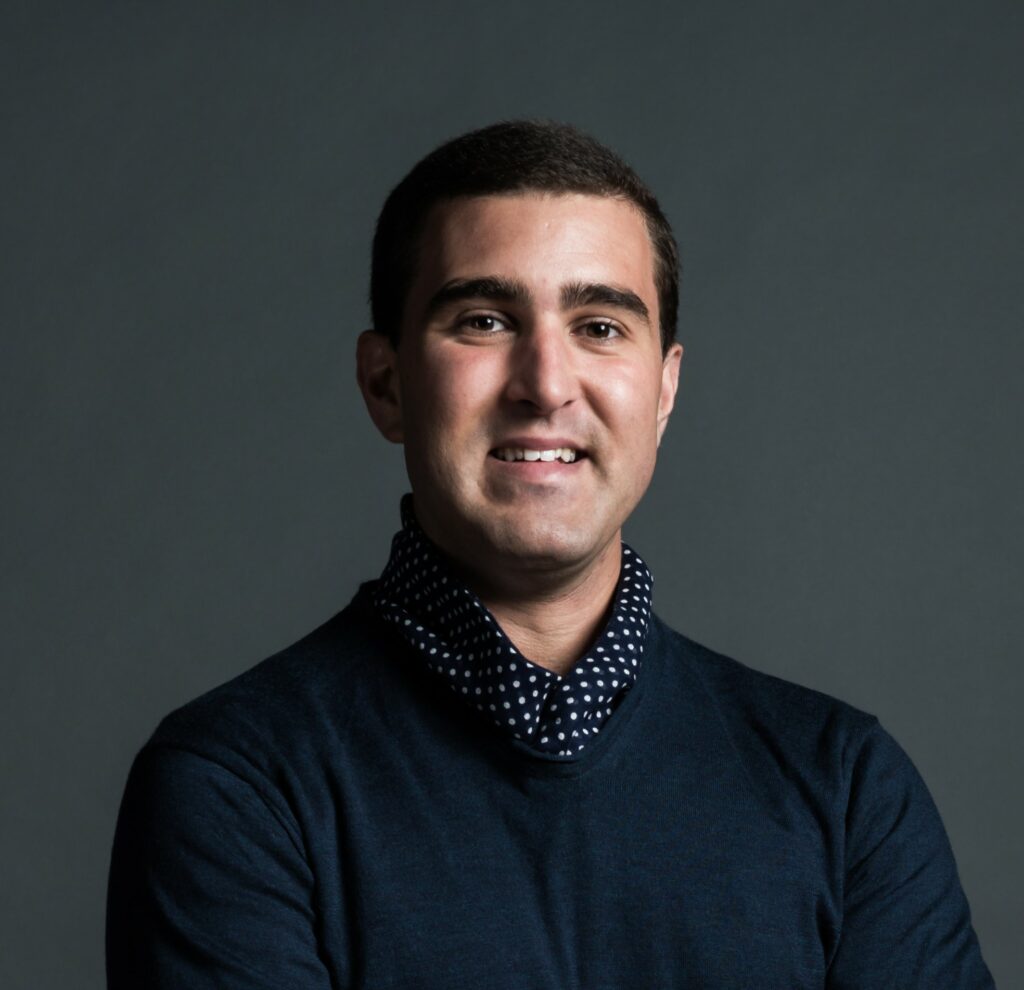The Pauses-Culture-Recherche
To promote interactions between humanitarian actors and researchers in humanities and social sciences, the French Red Cross Foundation regularly organises “Culture-Research-Breaks” at the headquarters of the French Red Cross. Our ambition is to concretely embody the link between research and society through sharing experiences and collaborations between humanities researchers, humanitarian and social actors, and even artists.
From war to peace: how the Red Cross changed its priorities after 1919
Last Thursday, the French Red Cross Foundation hosted a conference featuring historian Romain Fathi. He shed light on how the Red Cross Movement profoundly revised its priorities immediately following World War I to prevent the demobilization of millions of volunteers and members worldwide, transforming its wartime actions into peacetime and reconstruction efforts.
This presentation, based on the 1919 medical conference, provided crucial insights into the necessary shifts in humanitarian and public health actions at the core of the Red Cross’s mission.
The Red Cross’s DNA, closely tied to battlefields since the latter half of the 19th century, had already evolved at the beginning of the 20th century and during World War I. However, it was with the 1919 Cannes Medical Conference, which justified the creation of the League of Red Cross Societies (now the IFRC), that the Red Cross Movement officially adopted a global public health program to be executed by its national societies.

The 1919 Cannes medical conference
During a constructive and enriching “Pause-Culture-Recherche”, historian Romain Fathi, a lecturer and researcher at the Australian National University (ANU) in Canberra, Australia, and an associate researcher at the Centre d’Histoire de Sciences Po in Paris, revisited the 1919 cannes medical conference and the Red Cross movement’s public health turning point. This was a key moment for understanding the unprecedented expansion of the Red Cross in the early 20th century. The lively discussion, filled with intriguing anecdotes and historical or political insights, revealed a significant chapter in the history of our Movement. Romain Fathi highlighted the role of women in this context, as they actively contributed to raising awareness about public health issues.
In April 1919, the Cannes Medical Conference marked the first major step in a significant transformation. This event brought together a multitude of medical experts, including Nobel Prize laureates, under the aegis of the allied Red Cross societies to combat venereal diseases, tuberculosis, and malaria. The conference embodied the ambition of what would become the League of Red Cross Societies, aiming to generalize public health practices across national societies while seeking to increase their number.
This gathering also reflected the Red Cross’s desire to extend its humanitarian efforts beyond the context of war and aid to wounded soldiers, addressing public health within civil society. This aspiration, originating in 1902 through the efforts of Japan’s Empress Shōken, led to the creation of the Shōken Fund, designed to enable national societies to raise funds for public health initiatives in peacetime.
A pivotal figure in this expansion, often forgotten in the history of the International Red Cross, was Henry Pomeroy Davidson. His contributions were crucial in realizing these ambitious goals and expanding the scope of the Red Cross’s mission.
In April 1919, the Cannes Medical Conference marked the first major step in a significant transformation. This event brought together a multitude of medical experts, including Nobel Prize laureates, under the aegis of the allied Red Cross societies to combat venereal diseases, tuberculosis, and malaria. The conference embodied the ambition of what would become the League of Red Cross Societies, aiming to generalize public health practices across national societies while seeking to increase their number.
This gathering also reflected the Red Cross’s desire to extend its humanitarian efforts beyond the context of war and aid to wounded soldiers, addressing public health within civil society. This aspiration, originating in 1902 through the efforts of Japan’s Empress Shōken, led to the creation of the Shōken Fund, designed to enable national societies to raise funds for public health initiatives in peacetime.
A pivotal figure in this expansion, often forgotten in the history of the International Red Cross, was Henry Pomeroy Davidson. His contributions were crucial in realizing these ambitious goals and expanding the scope of the Red Cross’s mission.
In April 1919, the Cannes Medical Conference marked the first major step in a significant transformation. This event brought together a multitude of medical experts, including Nobel Prize laureates, under the aegis of the allied Red Cross to combat venereal diseases, tuberculosis, and malaria. The conference embodied the ambition of what would become the League of Red Cross Societies, aiming to generalize public health practices across national societies while seeking to increase their number. This gathering also reflected the Red Cross’s desire to extend its humanitarian efforts beyond the context of war and aid to wounded soldiers, addressing public health within civil society. This aspiration, originating in 1902 through the efforts of Japan’s Empress Shōken, led to the creation of the Shōken Fund, designed to enable national societies to raise funds for public health initiatives in peacetime.A pivotal figure in this expansion, often forgotten in the history of the International Red Cross, was Henry Pomeroy Davidson. His contributions were crucial in realizing these ambitious goals and expanding the scope of the Red Cross’s mission.
A captivating event
Throughout the conference, it becomes clear quite quickly that this evolution is marked by evident disagreements, which our speaker skillfully conveyed with humor, undoubtedly captivating the audience: after all, there is no evolution without challenges, overcome only through the perseverance of those united under a common ideal! An ideal always evolving, yet reaching its zenith here with the creation of the League of Red Cross Societies in May 1919.
It was an engaging journey filled with insightful exchanges and the intervention of Ms. Virginie ALAUZET, head of the Red Cross archives, reminding us once again that history and research play a pivotal role in understanding and preparing for the future!
Romain Fathi

Romain Fathi is a researcher at the Australian National University (ANU) in Canberra, Australia, and is also an associate researcher at the Center for History at Sciences Po in Paris. His work focuses on the transnational dimension of war and its consequences, both in the European and Australian contexts. His research also explores humanitarian issues and the Red Cross, particularly the League of Red Cross Societies.
He is one of the principal researchers of the Resilient Humanitarianism group, a project funded by the Australian Research Council, which seeks to understand how the League of Red Cross Societies (now known as IFRC) navigated through the tumultuous twentieth century while adapting to constantly evolving humanitarian needs and principles. Romain Fathi publishes in both French and English. He has taught at several universities, including in France (Sciences Po) and abroad (Yale University in the United States and the University of Queensland in Australia).
In partnership with






